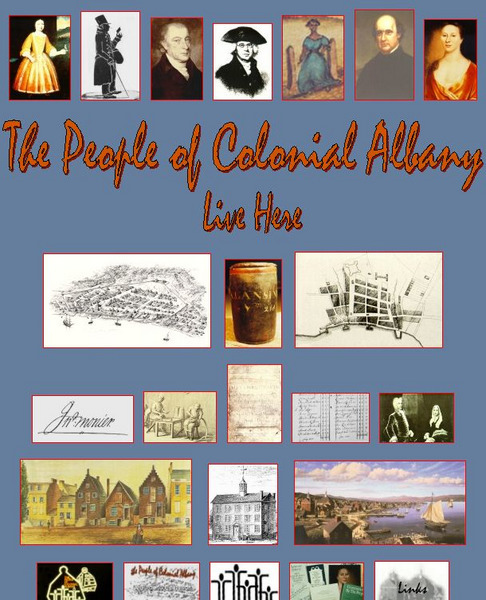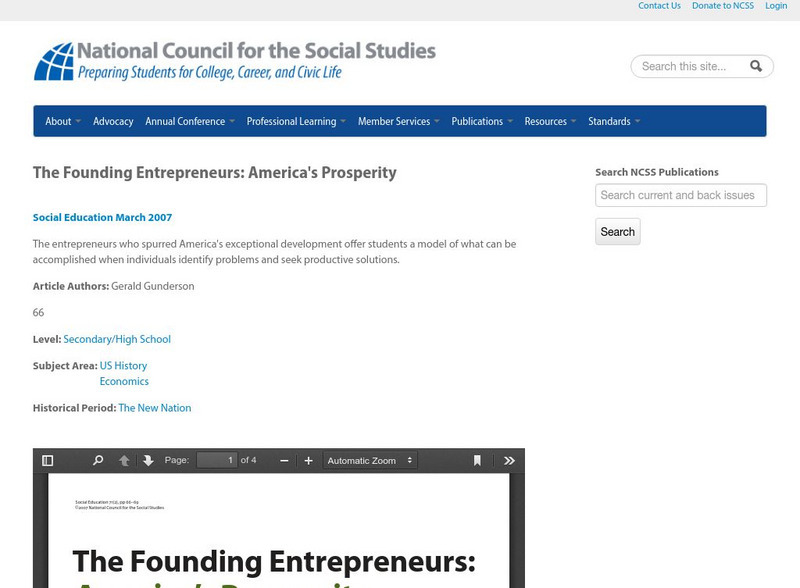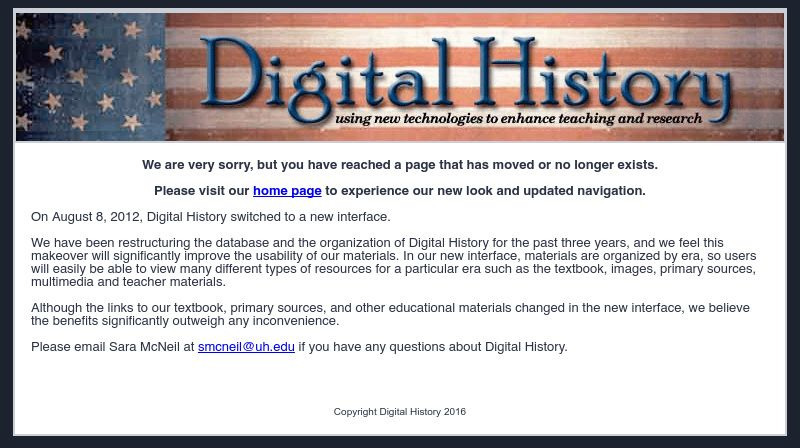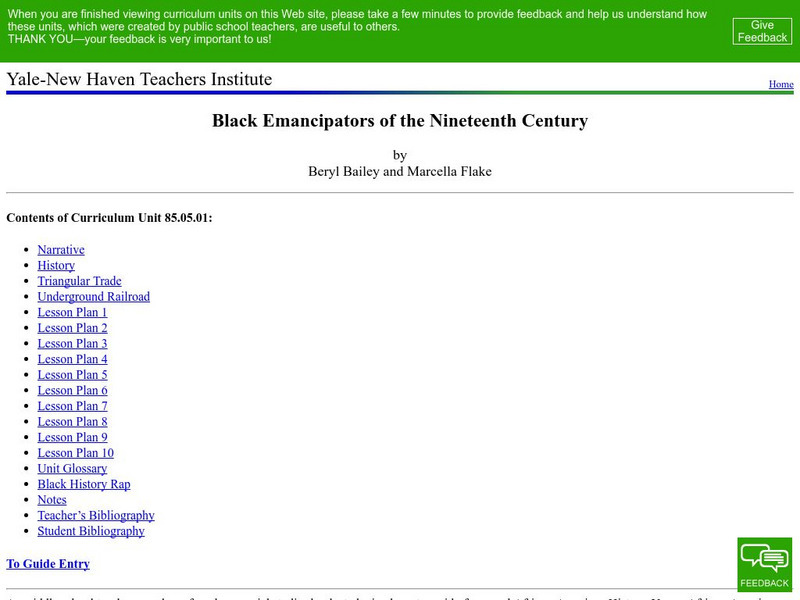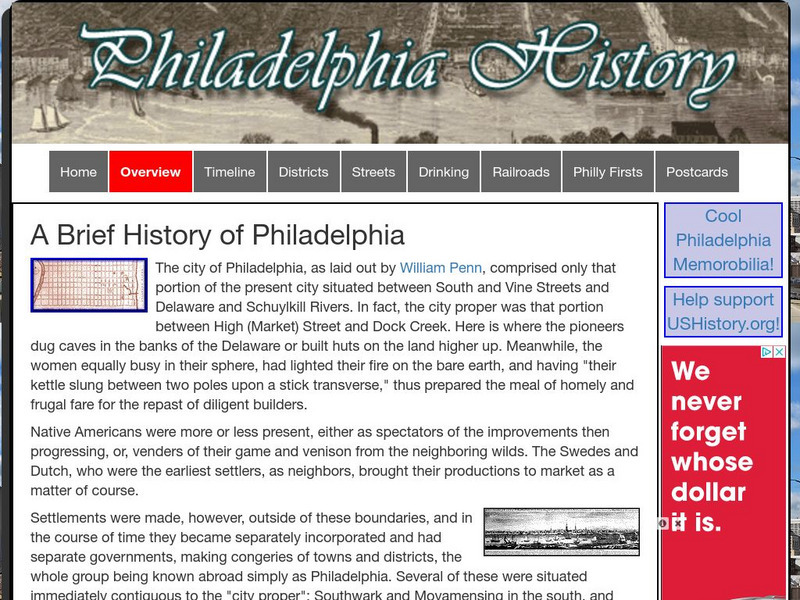Curated OER
Colonial Society on the Eve of Revolution 1700-1775
Six slides show maps, graphs, and trade routes showing the demographics and economy of the early colonial economy. No text is included in this presentation, it is for supplemental use only.
Curated OER
Rice Plantation
Eighth graders study the importance of rice as a cash crop and the crop's dependency on slave labor during the settlement of coastal South Carolina. They explain the importance of the rice plantations to South Carolina's colonial economy.
National Humanities Center
National Humanities Center: Toolbox Library: Becoming American: The British Atlantic Colonies, 1690 1763
Primary resource material on the economies of the New England colonies between 1690 and 1763.
University of Virginia
U. Of Virginia: "A Modest Enquiry Into the Nature and " by Benjamin Franklin
The original text of a 1729 essay by Benjamin Franklin entitled "A Modest Enquiry into the Nature and Necessity of a Paper-Currency." Franklin supports paper currency to encourage trade.
University of Notre Dame
Department of Special Collections: The Coins of Colonial and Early America
This site provides links to a variety of coins used in the colonies and in the confederation. Extremely detailed.
Other
Hillcrest High School: The Colonies Come of Age: The Commercial North [Pdf]
A chapter from a history text that looks at the Northern colonial economy, colonial town life, the immigrant groups who settled there, slavery in the North, the role of women, the Salem witchcraft trials, and the influence of the...
Other
New York State Museum: Colonial Albany
Provides information about life in the colonial village of Albany. Includes many resources about important structures, happenings, and people. A great resource for information on colonial America as a whole.
National Geographic
National Geographic: Society: A History of Trade in New York City
A lesson based on the New York City seal that explores the trading relationship between the Dutch and Native Americans in New Amsterdam.
Stanford University
Stanford History Education Group: The Middle Passage
[Free Registration/Login Required] Lesson plan on the Middle Passage includes PowerPoint presentation and primary source documents from which students explore original material.
Colonial Williamsburg Foundation
Colonial Williamsburg: 18th Century Trades Sampler
This site provides the types of trades and merchants found in 18th Century Williamsburg. Such trades include: apothecary, blacksmith, founder, harness maker, milliner, printer and bookbinder, shoemaker, silversmith, and wigmaker.
Other
National Council for the Social Studies: The Founding Entrepreneurs
Our nation was built on the ingenuity and drive of entrepreneurs. From colonial times until today, entrepreneurs have innovated and developed new products and services which resulted in our economy having the fastest development of all...
Colonial Williamsburg Foundation
Colonial Williamsburg: Colonial Tools
Lists the tools used by colonial merchants and tradespeople. Each tool listed is linked to a description, many complete pictures.
National Humanities Center
National Humanities Center: America in Class: Successful European Colonies in the New World
Lesson using primary source material on European attempts to establish colonies in the New World and why some were successful but most failed.
Huntington Library
Huntington Library: Triangular Trade
In this lesson, 5th graders learn about the many societal structures that developed in colonial days, including the conditions for self-government in America, the free-market economy, and the slavery system. Background information for...
Curated OER
National Park Service: Teaching With Historic Places: Plantation Agriculture
This resource lets you explore the workings of southern plantations.
University of Groningen
American History: Outlines: The Colonial Period
The early settlers to the New World began to map strategy for their own system of government. This site details that strategy and what kinds of events spawned the idea of representative government.
Digital History
Digital History: The Slave Trade's Significance
An explanation of the significance of the slave trade in the colonial economy as well as in Europe. See why the slave trade stimulated manufacturing and resulted in the transatlantic triangular trade.
Yale University
Yale New Haven Teachers Institute: Connecticut: A Case Study in Anti Imperialism
Lesson plan for 7th and 8th grade. Gives notes on imperialism, mercantilism and how Great Britain used the colonies as a source for raw materials.
Yale University
Yale New Haven Teachers Institute: Black Emancipators of the 19th Century
A lesson unit on the people and movements that fought to abolish slavery. Looks at the Triangular Trade, and at the Underground Railroad and famous abolitionists. Includes a play about emancipation, a black history rap and a trivia quiz...
Georgia Humanities Council and the University of Georgia Press.
New Georgia Encyclopedia: History and Archaeology: Indigo
Discussion of how production of the blue dye, indigo, helped boost the economy of Georgia and South Carolina in the seventeenth and eighteenth century until the Revolutionary War when England stopped buying it and production collapsed.
University of Notre Dame
Department of Special Collections: Colonial Currency
This resource from the Notre Dame University provides a comprehensive look at the currency of colonial America. Includes pictures and explanations of currency, lottery tickets and fiscal documents. All are listed chronologically by colony.
San Jose State University
Sjsu: Agriculture in the Middle Colonies
An excerpt of a primary source, American Husbandry, a book from 1775, describing the crops of the Middle Colonies.
Jamestown-Yorktown Foundation
History Is Fun: Early Industries in Virginia [Pdf]
Discusses the many enterprises undertaken by the colonists in Virginia to try to make a profit. They were not successful until they began to grow tobacco.
Independence Hall Association
U.s. History: Historic Philadelphia: Philadelphia History
Reading through the beginning of this article will show the role shipping and ship building played in Philadelphia's economy.







![Hillcrest High School: The Colonies Come of Age: The Commercial North [Pdf] eBook Hillcrest High School: The Colonies Come of Age: The Commercial North [Pdf] eBook](https://d15y2dacu3jp90.cloudfront.net/images/attachment_defaults/resource/large/FPO-knovation.png)
